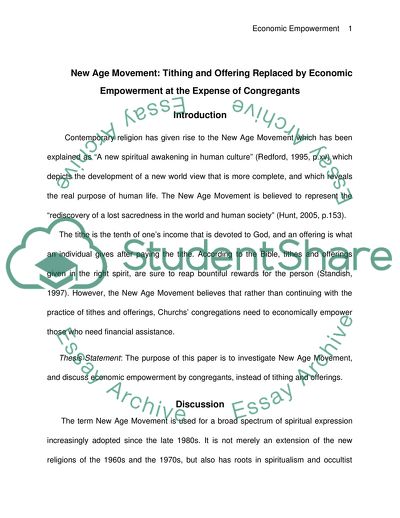Cite this document
(New Age Movement: Tithing and Offering Replaced by Economic Coursework, n.d.)
New Age Movement: Tithing and Offering Replaced by Economic Coursework. https://studentshare.org/religion-and-theology/1730156-new-age-movementeconomic-empowerment-at-the-expense-of-congregants-instead-of-tithing-offerings
New Age Movement: Tithing and Offering Replaced by Economic Coursework. https://studentshare.org/religion-and-theology/1730156-new-age-movementeconomic-empowerment-at-the-expense-of-congregants-instead-of-tithing-offerings
(New Age Movement: Tithing and Offering Replaced by Economic Coursework)
New Age Movement: Tithing and Offering Replaced by Economic Coursework. https://studentshare.org/religion-and-theology/1730156-new-age-movementeconomic-empowerment-at-the-expense-of-congregants-instead-of-tithing-offerings.
New Age Movement: Tithing and Offering Replaced by Economic Coursework. https://studentshare.org/religion-and-theology/1730156-new-age-movementeconomic-empowerment-at-the-expense-of-congregants-instead-of-tithing-offerings.
“New Age Movement: Tithing and Offering Replaced by Economic Coursework”. https://studentshare.org/religion-and-theology/1730156-new-age-movementeconomic-empowerment-at-the-expense-of-congregants-instead-of-tithing-offerings.


